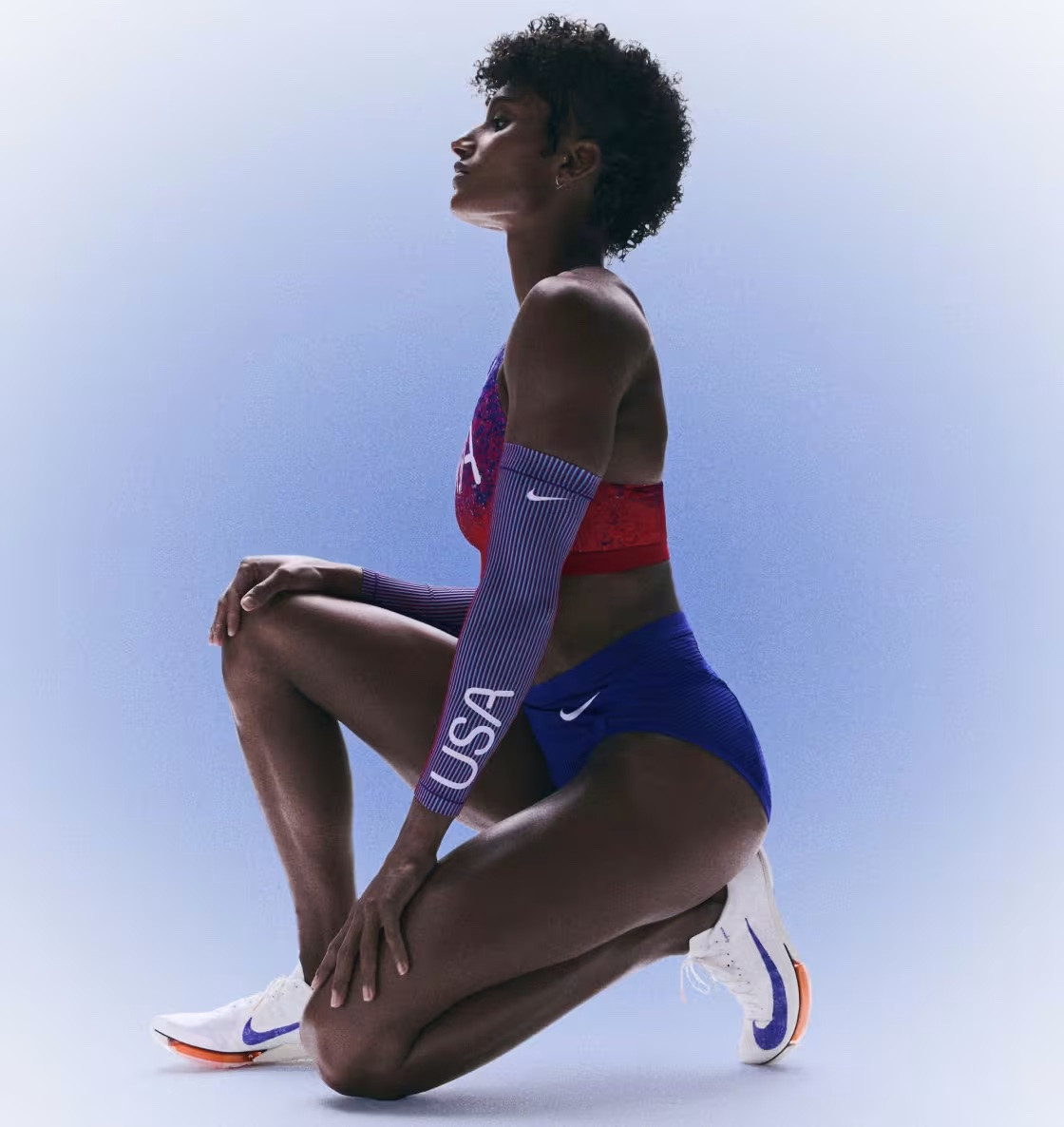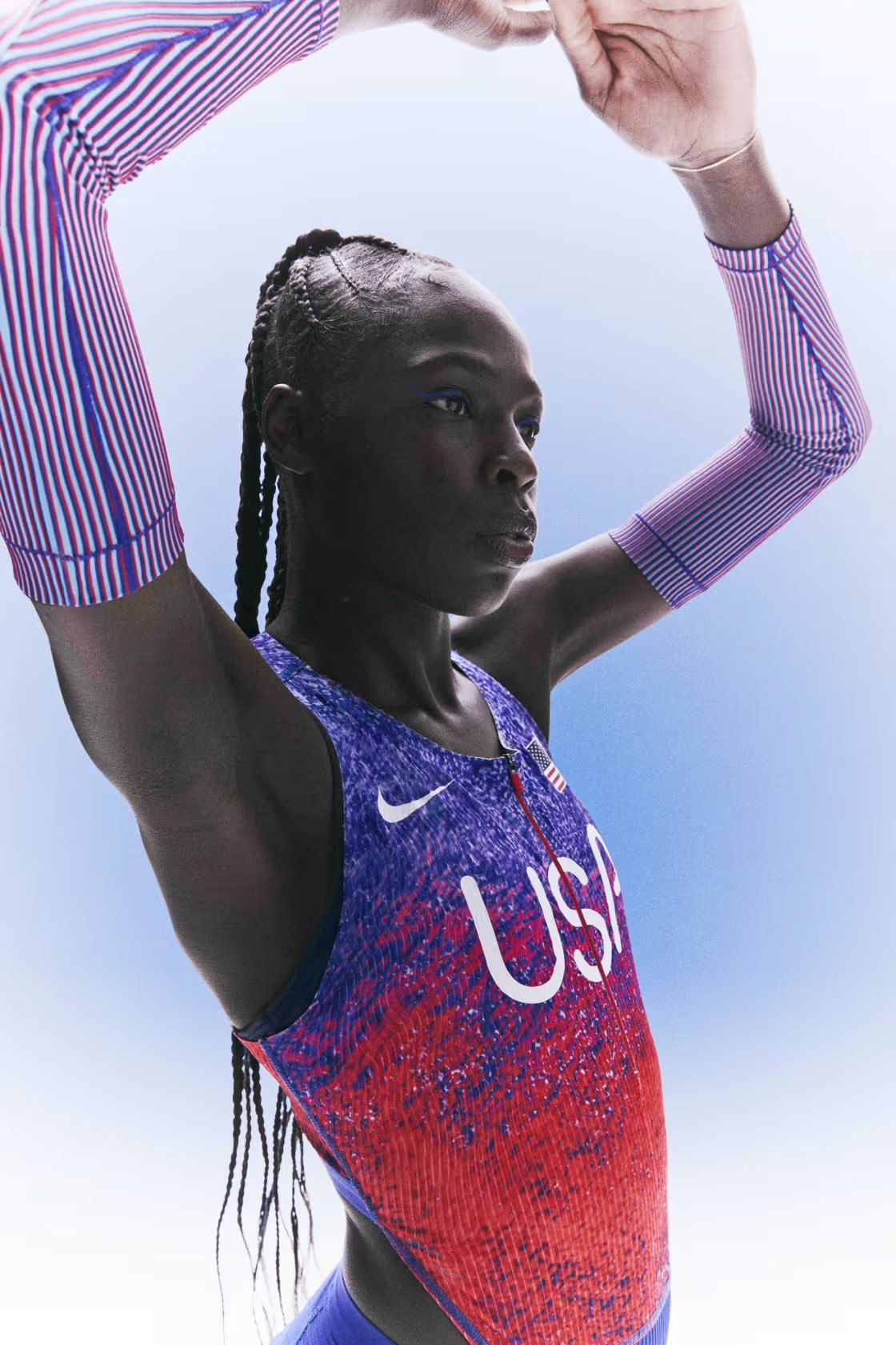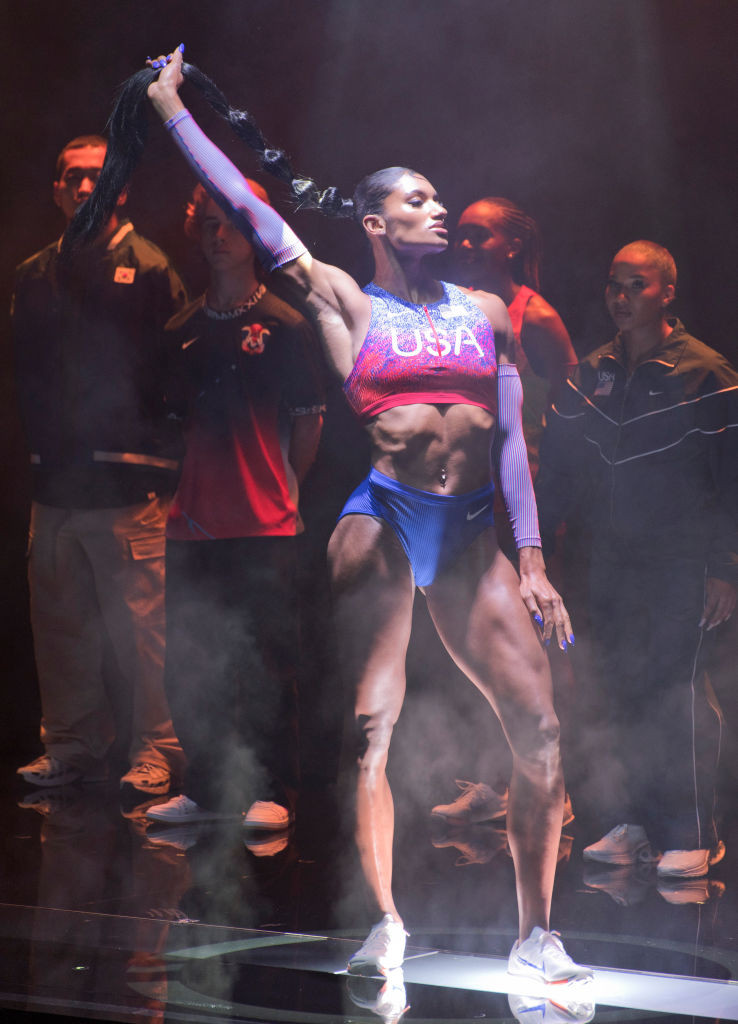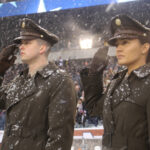Nike’s unveiling of the track and field uniforms for Team USA at the upcoming 2024 Paris Olympics has ignited a significant controversy. Critics have taken to social media to voice concerns over the design of the performance wear, with some labeling it as sexist. The debate erupted shortly after the brand showcased the kits, prompting discussions about athlete comfort, choice, and the representation of women in sports.
Initial Reactions and Design Details
The controversy began when Citius Mag, a track and field publication, shared images of the men’s and women’s uniform options. The women’s kit, featuring a high-cut leotard silhouette, immediately drew attention and sparked criticism. The 2024 designs maintain the traditional red, white, and blue color scheme of Team USA, reminiscent of the Tokyo Olympics uniforms from 2021, but the focus quickly shifted to the perceived revealing nature of the women’s leotard option.
 Team USA athletes in Nike track uniforms
Team USA athletes in Nike track uniforms
Image: Team USA athletes showcase Nike’s track and field uniform for the Paris 2024 Olympics, highlighting the design that has sparked controversy.
Athlete Concerns and Criticisms
Several prominent athletes have voiced their opinions on the uniform design. American long jumper Tara Davis-Woodhall, a Tokyo Games competitor, humorously commented on Instagram about the revealing cut, saying, “Wait my hoo haa is gonna be out.” Queen Harrison Claye, a U.S. hurdler and Olympian, sarcastically tagged European Wax Center, inquiring about a sponsorship for Team USA, further highlighting the perceived impracticality and revealing nature of the design. Paralympic runner Jaleen Roberts echoed these concerns, pointing out the potential for exposure during athletic movements.
Colleen Quigley, a steeplechaser and Olympic hopeful for Team USA in 2024, stated in an interview with Reuters that the unitard is “absolutely not made for performance.” Lauren Fleshman, a retired track star and coach, was particularly critical, calling the uniform a “costume born of patriarchal forces” in an Instagram post. She argued against designs that might be perceived as objectifying athletes and distracting from their performance. “Stop making it harder for half the population,” Fleshman urged, emphasizing the need for comfortable and empowering athletic wear for women.
 Athing Mu modeling the Nike Team USA Olympic kit
Athing Mu modeling the Nike Team USA Olympic kit
Image: Athing Mu, a Team USA athlete, models a version of Nike’s 2024 Olympic track and field uniform, part of the range causing debate over design and athlete choice.
Defense and Clarifications
Despite the backlash, some athletes have come to Nike’s defense, emphasizing the availability of multiple uniform options. Pole vaulter Katie Moon, an Olympic gold medalist sponsored by Nike, clarified on Instagram that Team USA athletes have access to a wide array of uniform combinations, approximately 20 different options. She addressed the concerns directly, acknowledging that the mannequin display was “concerning” but stressed that athletes are not limited to the leotard. Moon further stated that athletes can even choose the “men’s option” if preferred. She cautioned against broadly labeling the design as “sexist,” arguing that such criticism could undermine the choices of female athletes who might prefer the more revealing styles.
Responses from Nike and USATF
In response to the growing controversy, Nike issued a statement to ABC News, explaining that the unitard is just one of many styles available to athletes. The brand highlighted the “range of styles” designed to cater to diverse preferences and needs. Nike also mentioned that “tailoring options” would be available for Olympic and Paralympic athletes during the Games, indicating a commitment to personalized fit and comfort.
USA Track & Field (USATF) also released a statement to ABC News, reinforcing Nike’s point about choice and variety. USATF emphasized that the showcased outfits are “only two of many options, including 50 unique pieces,” that athletes can select from for the Olympics. They further noted that “Athlete options and choices were the driving force for USATF in the planning process with Nike.” USATF also asserted that Nike had consulted with athletes throughout the design process to ensure comfort and suitability for various events.
 Anna Cockrell at the Nike Air Innovation Summit in Paris
Anna Cockrell at the Nike Air Innovation Summit in Paris
Image: Anna Cockrell at the Nike Air Innovation Summit in Paris, wearing Nike apparel, amidst the discussions surrounding the 2024 Olympic uniforms.
Conclusion: A Matter of Choice and Performance?
The controversy surrounding Nike’s Olympic uniforms for 2024 highlights a complex discussion about sexism, athlete choice, and performance wear design. While some critics argue the designs are revealing and potentially objectifying, Nike and USATF emphasize that the range of options provides athletes with personal choice and performance-oriented solutions. The debate underscores the ongoing conversation about appropriate representation and comfort for women in sports, and how uniform design plays a role in these perceptions. Ultimately, the focus remains on ensuring athletes feel confident and supported in their chosen attire as they compete on the world stage at the Paris Olympics.


